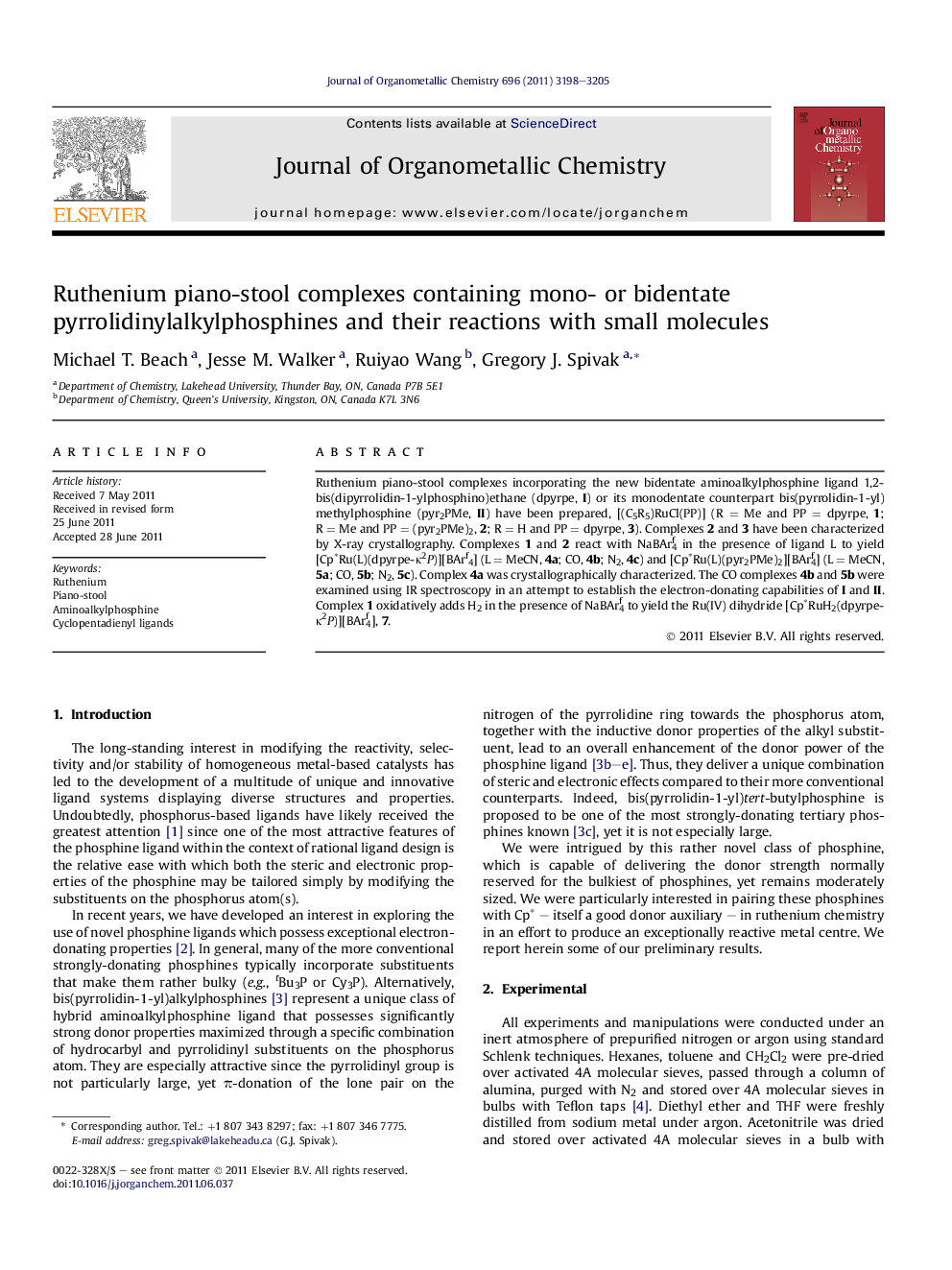| Article ID | Journal | Published Year | Pages | File Type |
|---|---|---|---|---|
| 1325206 | Journal of Organometallic Chemistry | 2011 | 8 Pages |
Ruthenium piano-stool complexes incorporating the new bidentate aminoalkylphosphine ligand 1,2-bis(dipyrrolidin-1-ylphosphino)ethane (dpyrpe, I) or its monodentate counterpart bis(pyrrolidin-1-yl)methylphosphine (pyr2PMe, II) have been prepared, [(C5R5)RuCl(PP)] (R = Me and PP = dpyrpe, 1; R = Me and PP = (pyr2PMe)2, 2; R = H and PP = dpyrpe, 3). Complexes 2 and 3 have been characterized by X-ray crystallography. Complexes 1 and 2 react with NaBAr4f in the presence of ligand L to yield [Cp∗Ru(L)(dpyrpe-κ2P)][BArf4] (L = MeCN, 4a; CO, 4b; N2, 4c) and [Cp∗Ru(L)(pyr2PMe)2][BAr4f] (L = MeCN, 5a; CO, 5b; N2, 5c). Complex 4a was crystallographically characterized. The CO complexes 4b and 5b were examined using IR spectroscopy in an attempt to establish the electron-donating capabilities of I and II. Complex 1 oxidatively adds H2 in the presence of NaBAr4f to yield the Ru(IV) dihydride [Cp∗RuH2(dpyrpe-κ2P)][BAr4f], 7.
Graphical abstractThe synthesis of ruthenium piano-stool complexes containing the novel pyrrolidinylalkylphosphine ligands 1,2-bis(dipyrrolidin-1-ylphosphino)ethane (dpyrpe) or bis(pyrrolidin-1-yl)methylphosphine (pyr2PMe) are described, along with their substitution chemistry. The steric and electron-donating properties of these ligands are also examined.Figure optionsDownload full-size imageDownload as PowerPoint slideHighlights► The diphosphine 1,2-bis(dipyrrolidin-1-ylphosphino)ethane (dpyrpe) was prepared. ► Steric impact of the ligands examined were estimated using X-ray crystallography. ► IR spectroscopy revealed similar ligand donor properties with the phenyl analogues. ► 16-electron species could be trapped with suitable ligands.
